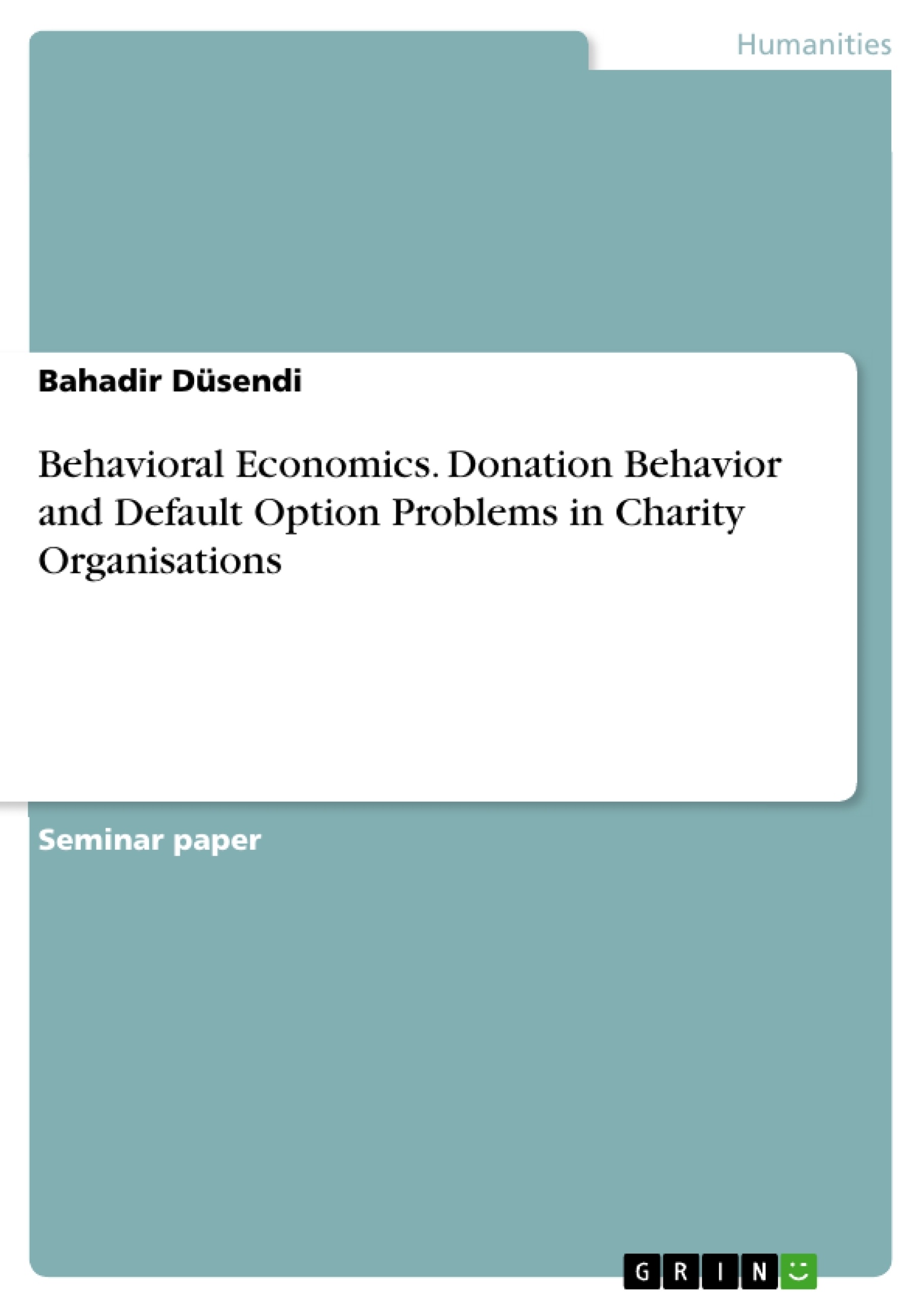The so called nudging or setting defaults are getting more and more common. After the United Kingdom and the United States of America, Germany also got a nudging unit to affect laws by behavioral economic founding. Many aid organizations often struggle to collect enough donations in order to provide the help that is needed. By learning more about the donation behavior of individuals this problem might be solved. This study tries to find possible connections between donation behavior and default option problems.
A lot of previous studies in behavioral economics show that setting defaults to opt-out are significantly influencing the behavior of the participants. Our experiment should analyze these findings concerning giving donations to charity organizations. We want to investigate if there are differences in donation between the opt-in and opt-out options. For that, we will conduct selling “Berliner” at two booths. At the first booth we will set the default 1€ and ask for a 0.50€ donation on top. At the second table we will set the default 1.50€ with the opportunity, not to pay the 0.50€ for donation, if the participant does not want to.
First, we will build a theoretical framework for our study in which different default option studies will be introduced. Furthermore, a hypothesis is constructed following the results of these previous studies. Following our argumentation, it is hypothesized that the number of donations should be higher in the case of opt-out than in the case of opt-in. After the overall framework is explained, our experiment will be described in detail. At first the overall environment, structure and design of the experiment is described. Following, the implementations are stated.
In the next chapter an analysis of our results is conducted. In the beginning our findings are presented in a number of charts and figures. Subsequently, these findings are analyzed and dis-cussed with a critical point of view. Possible improvements are mentioned and problems that occurred during the experiment described. At last an overall conclusion will be drawn with suggestions for further Research.
Inhaltsverzeichnis (Table of Contents)
- Introduction
- Default theory
- The Experiment
- The Environment
- The Implementation
- Analysis
- Data description
- Data analysis
- Conclusion
- References
Zielsetzung und Themenschwerpunkte (Objectives and Key Themes)
This study aims to investigate the impact of default options on donation behavior, specifically focusing on the differences between opt-in and opt-out options. The study seeks to determine whether setting a default donation amount influences the likelihood of individuals donating to charity.
- The influence of default options on donation behavior.
- The differences between opt-in and opt-out options in donation contexts.
- The application of behavioral economic principles, particularly nudging, to encourage charitable giving.
- The role of framing and choice architecture in influencing individual decisions.
- The potential for behavioral interventions to address challenges in charitable fundraising.
Zusammenfassung der Kapitel (Chapter Summaries)
The introduction lays out the research problem, highlighting the growing use of nudging and the challenges faced by aid organizations in securing donations. The study aims to investigate the impact of default options on donation behavior, specifically focusing on the differences between opt-in and opt-out options. The chapter introduces the theoretical framework for the study, drawing from existing research on default theory and nudging.
The chapter on default theory provides a comprehensive overview of the concept, discussing its origins in behavioral economics and its application in various contexts. The chapter examines the mechanisms through which default options influence individual choices, including the perceived authority of the policy maker, the effort involved in making decisions, and the status quo bias.
The chapter on the experiment details the design and implementation of the study. It describes the environment in which the experiment was conducted, including the setup of the booths and the products sold. The chapter also outlines the specific procedures used to collect data on donation behavior.
The chapter on analysis presents the findings of the study, using charts and figures to visualize the collected data. The chapter analyzes and discusses the results, providing a critical evaluation of the findings and highlighting any limitations or challenges encountered during the experiment.
Schlüsselwörter (Keywords)
The study focuses on the impact of default options on donation behavior. Key terms include default theory, nudging, opt-in, opt-out, behavioral economics, choice architecture, donation behavior, charitable giving, and framing effects. The study explores the potential for using behavioral interventions to enhance charitable fundraising efforts. The study also draws on the findings of previous research on default options and their influence on individual choices in various contexts.
- Citar trabajo
- Bahadir Düsendi (Autor), 2016, Behavioral Economics. Donation Behavior and Default Option Problems in Charity Organisations, Múnich, GRIN Verlag, https://www.grin.com/document/320736



